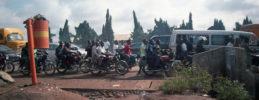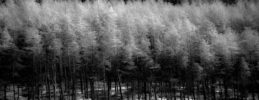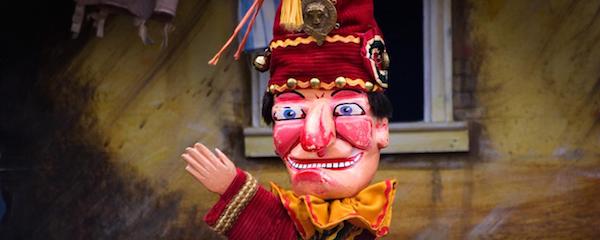
('That's the way to do it!' © Rick Harrison, 2008)
AN INTERVIEW WITH
GREGORY NORMINTON
*
 Gregory Norminton’s novels include The Ship of Fools (2002), Arts and Wonders (2004), Ghost Portrait (2005) and Serious Things (2008), all published by Sceptre. Other books include The Lost Art of Losing (2012), Thumbnails (2013) and Beacons – stories for our not so distant future (editor, 2013). His stories have appeared on BBC Radio 4, and in Prospect, Resurgence, London Magazine and The Lonely Crowd. He teaches creative writing and English at Manchester Metropolitan University. www.gregorynorminton.co.uk
Gregory Norminton’s novels include The Ship of Fools (2002), Arts and Wonders (2004), Ghost Portrait (2005) and Serious Things (2008), all published by Sceptre. Other books include The Lost Art of Losing (2012), Thumbnails (2013) and Beacons – stories for our not so distant future (editor, 2013). His stories have appeared on BBC Radio 4, and in Prospect, Resurgence, London Magazine and The Lonely Crowd. He teaches creative writing and English at Manchester Metropolitan University. www.gregorynorminton.co.uk
~
The Ghost Who Bled spans centuries and continents, the stories amounting to a tour de force of literary worldbuilding. From deeply insecure time travellers to medieval mystics and futuristic body modification cults, Norminton’s characters find themselves torn between conflicting impulses – temptation and fortitude, hubris and shame, longing and regret. By turns sad, strange and darkly comic, The Ghost Who Bled reveals a master storyteller of incredible range.
~
Vicki Heath talks with Gregory Norminton:
~
Vicki Heath: Thanks so much for joining us for this interview. I’ve loved reading THE GHOST WHO BLED over the past couple of weeks. There’s a dark and humorous mix of stories within, which travel much ground, traversing time and place, and even the concept of time.
It’s clear to see from several of your stories (and your other works) that history, from around the world, plays quite a part in your writing. Can you shed some light on why the past holds such allure for you as a writer?
Gregory Norminton: Aside from fiction, history makes up the bulk of my reading. I almost studied it at university. And the best popular historians – people like Mary Beard, Orlando Figes, Antony Beevor – know how to interweave epic material with intimate stories. In other words, the art of fiction and the art of historical narrative are closely connected. Remember the first half of L.P. Hartley’s famous line: “The past is another country…” Well, you can travel physically to other countries, but you can only travel to the past in your imagination. Storytelling is time-travel: with a bit of research and a capacity for daydream, you have a virtual TARDIS at your disposal.
One lure of ‘historical fiction’ is that it allows the author something resembling overview. Patterns of meaning are easier to read at a distance. The past allows us to draw parallels with our present predicaments without getting lost in ephemera that soon come to feel dated. When you try to write topically, you risk losing the signal for the noise, whereas finding echoes of present disorders in the disorders of the past helps us to locate ourselves now.
To give you an example. My story ‘The Hermit of Athos’ is set in the Aegean in the Middle Ages, yet it grew, in part, out of my concerns about climate change. How does a society respond to news of its impending collapse? Why do we long to know the future yet despise and fear anyone who can reasonably claim to do so? I do not intend for the story to be read as allegory. It had other generative impulses: a friend had recently published a book about Mount Athos, I am interested in religion, and I was moved by the image of a hermit who is denied his isolation. However, I did want the story to resonate beyond its historical setting. I am wary of strict analogies but echoes are intentional.
VH: Tell me about the title story of this new collection – which appears to follow a dead Japanese fighter pilot at the end of WWII – where did that start?
GN: This story has a rather random foundational moment. Alec Guinness, in one of his published diaries, muses about the fates of ‘kamikaze’ pilots and offers the detail that volunteers would attend their own funerals before the mission. This meant that they were, socially speaking, already dead when they got into their aircraft… If I tell you more, I’ll be trafficking in spoilers.
VH: I’m also greatly interested to know where ‘The Halt’ came from. It’s a fascinating story that, on the surface, is a narrative from Punch (of Punch and Judy) after the shows cease; it begins with comedy but ends with dark melancholy. Where did this idea come from, and how did it develop?
~
…something mythic and diabolical
behind the papier-mâché features
of the old wife-beater.
~
GN: Some stories – like ‘The Ghost Who Bled’ – reveal their essence quickly. Others accumulate from imagery or the scraps of conceits. ‘The Halt’ falls into this latter category. It was my first attempt (there have been others) to reckon with the horrors of the First World War. I began with the distressing image of an amputee lying in a hospital ward, unable to communicate and so trapped in his head. I did some reading about phantom limb syndrome, and from there came the conceit that this soldier had been a puppeteer before the war. His ruined body lies under a sterile tent, and this becomes a grim analogue of the traditional Punch and Judy tent. Punch and Judy shows are full of violence and horror, yet they are supposed to entertain children. So fictional horror and factual horror began to coexist in my mind. This all makes the process sound more conscious and systematic than it was, and there comes a point where you don’t want to interrogate the source of a story. It may be telling, however, that two of my favourite writers, Russell Hoban in Riddley Walker and Neil Gaiman in The Tragical Comedy or Comical Tragedy of Mr. Punch, have discerned something mythic and diabolical behind the papier-mâché features of the old wife-beater.
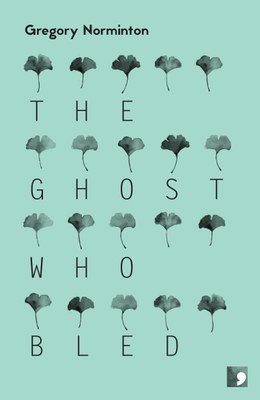 VH: As a writer of both, how do you determine whether an idea will grow into a short story or a novel?
VH: As a writer of both, how do you determine whether an idea will grow into a short story or a novel?
GN: It comes down, I suppose, to instinct honed by practice. A short story is usually the elaboration of an image, a character, a predicament, whereas a novel grows out a cast of characters and a set of overlapping concerns. The distinction between the two forms is not just one of duration but also of depth. It’s as if there is latent capacity in the DNA of a story. You try to nurture it until it takes the form it is suited to – all of which looks like Californian woo when you write it down, but I can’t think of a better answer. There can be traffic between the novel and the story, but it’s one-way. No short story of mine has ever expanded into a novel, but I have repurposed short stories out of the ruins of aborted novels.
VH: What is it for you – as a reader or as a writer – that makes a really powerful short story?
GN: A world suggested in a glimpse of a world. That’s as succinct as I can make it.
VH: Which of your own stories still brings you the most pleasure, and why?
GN: Well, I can’t bear to re-read my novels once they’re published (if not before), whereas there are a few short stories that I can tolerate. These are the ones that get closest, in my self-serving view, to meeting the dictum above. The novel, in its bulk, cannot escape superfluity, whereas the best stories have nothing superfluous. If you cannot replace a word with a synonym, if paraphrase is impossible without diminishing the effect, then you may have achieved something worthwhile. I don’t think I can make such lofty claims for anything I have written, but a few stories of seem to me properly finished: in this collection, ‘The Ghost Who Bled’, ‘Confessions of a Tyrant’s Double’, maybe ‘The Time Traveller’s Breakdown’.
VH: Is there a short story, written by someone else, that you wish you’d written?
GN: Oh, there are so many! Most of the stories in Borges’s Fictions. Samuel Beckett’s short stories ‘The End’, ‘The Calmative’ and ‘First Love’. ‘In the Ravine’ by Chekhov, which remains one of the most disturbing things I’ve ever read. I love the short stories of Helen Simpson, Margaret Atwood, V.S. Pritchett, George Mackay Brown (another time traveller, though centred on his beloved Orkney islands), John Updike and David Constantine. I have a particular enthusiasm for tales of the supernatural, so shout-outs in this category for ‘Ringing the Changes’ by Robert Aickman, ‘The Axe’ by Penelope Fitzgerald, ‘Le Horla’ by Guy de Maupassant, ‘Revenant as Typewriter’ by Penelope Lively, and perhaps inescapably, ‘Oh, Whistle, and I’ll Come to You, My Lad’ by M.R. James. I am presently miles away from my bookshelves; if I were at home, I could make this paragraph several inches wider.
VH: When/how did you discover that being a writer was very important to you?
~
…in my teens and early twenties,
I wanted to be an actor. I have, however,
always wanted to be writing.
~
GN: Can I be fastidious and distinguish between the practice of writing and the experience of ‘being a writer’? The latter is important for my self-esteem; it also justifies the lecturing post without which I would be obliged to seek gainful employment. I have not always wanted to be a writer: in my teens and early twenties, I wanted to be an actor. I have, however, always wanted to be writing. The focus may have shifted – when I was a boy I wrote comedy sketches and comics – but the practice of daydreaming on the page has been important to me since I was very young.
VH: Your writing extends to translation – including French children’s classics The Little Prince by Antoine de Saint-Exupéry and Belle and Sébastien by Cécile Aubry – can you tell us a little about the draw of this kind of work? What does translation teach you about your own writing?
GN: I started taking on translation work when I was freelance. Quite simply, I needed the money, and having grown up in a bilingual household (my mother was French), I had a marketable skill. I have done some translations out of necessity, but more recently, with the titles you mention, I have undertaken the work in part for the literary challenge. Translation work is related to writing but it uses different muscles. Your task is not to be true to your own vision but to serve someone else’s. You look for the right words to convey not only direct meaning but also something of the resonance, the associative hinterland, of the original text. This is good exercise for a stylist, because it requires you to convey a voice other than your own.
VH: Could you share with us the most valuable piece(s) of advice that helped your writing develop?
GN: Trust to the process. Frustration, confusion and doubt are parts of that process – never let them frighten you into giving up.
VH: Gregory, thank you so much for taking the time to talk with THRESHOLDS.
~
Gregory will be discussing and reading from his collection at Waterstones Piccadilly in London on Friday 2nd June, along with other leading writers of the form Ely Williams and Jan Carson. Tickets cost £8/£6 with a Waterstones Card.
~
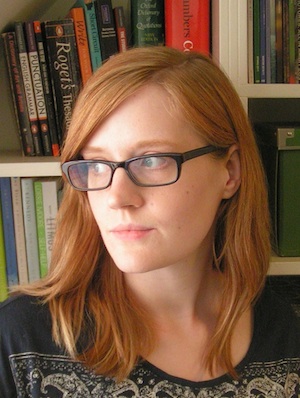
Vicki Heath is a short story writer and holds an MA in Creative Writing from the University of Chichester, which was awarded the Kate Betts Memorial Prize. Her stories have been published in the UK and internationally. They have also placed and been short and longlisted for various prizes, including the Bridport Prize and Fish Short Story Prize.
As well as being the Editor at Thresholds, Vicki edits and appraises fiction and poetry, and provides ghostwriting services at twenty-sixletters.com
~
Author photograph © Kezia Tan, 2013
